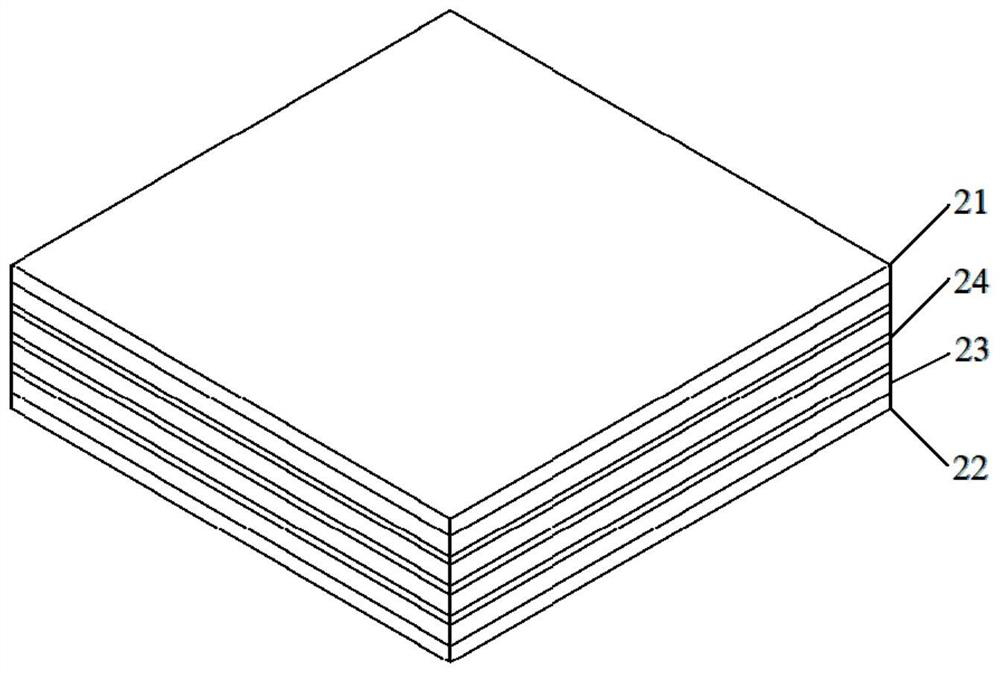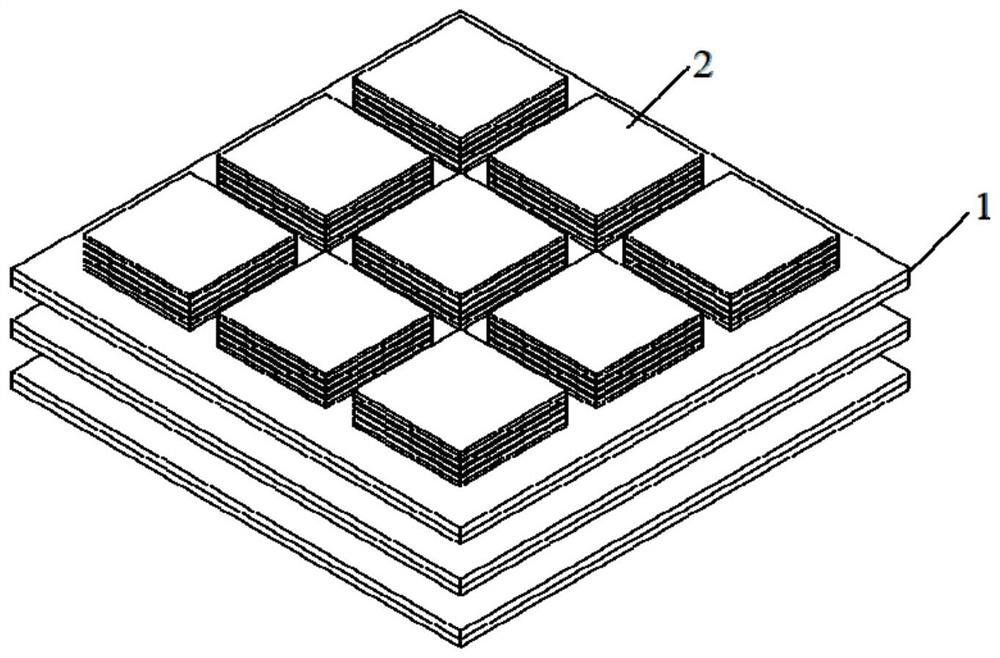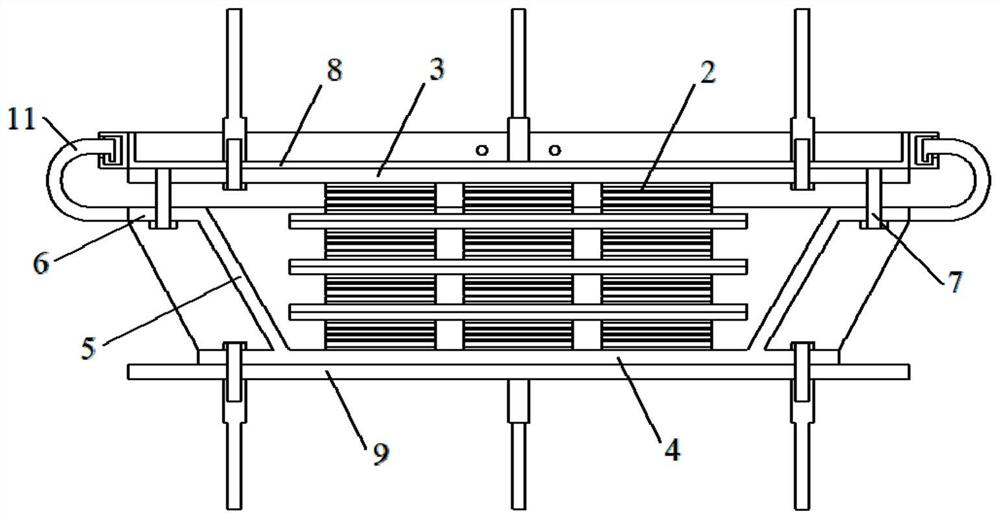However, the current mature
seismic isolation bearing products cannot meet the above requirements, as shown in the following:
[0004] 1) Current mature isolation bearing products such as
natural rubber isolation bearing (LNR bearing), lead rubber isolation bearing (LRB bearing), high damping rubber isolation bearing (HDR bearing), elastic Skateboard isolation bearings (SLB bearings), etc., only have the function of isolating the horizontal seismic action, and the cost is expensive; in order to ensure the stability of the bearing under the
vertical load, these isolation bearing products, the first shape Coefficient S 1 (the ratio of the effective pressure-bearing area of the single-layer rubber layer in the bearing to its free side surface area) and the second shape coefficient S 2 (The ratio of the
diameter or effective width of the inner rubber layer to the
total thickness of the inner rubber) adopts a larger value (S 1 >15,S 2 >5), the
vertical stiffness of the support is very large, and it does not have the function of
vertical vibration isolation
[0005] 2) The current mainstream way to improve the
vertical vibration isolation performance of the isolation bearing is to adopt the scheme of thick laminated (thick meat)
rubber bearing, that is, to increase the thickness of the single rubber layer of the bearing so that the free side of the single rubber However, the reduction of the
vertical stiffness of the support by this method is still very limited. The main reason is that in order to maintain the stability and
structural safety of the support, the increase in the thickness of the single-layer rubber layer is relatively limited. Limited reduction of the first shape factor S 1 , so that it is still impossible to reduce the vibration isolation frequency below 10Hz in practical
engineering applications. Not only can it not effectively isolate vibration, but it may also cause the amplification of low-frequency components of vibration in the traffic environment, and the vibration isolation function will be lost, so it is difficult to popularize
[0006] 3) At present, another way to improve the
vertical vibration isolation performance of the vibration isolation bearing is to integrate the traditional vibration isolation bearing in series with the vertical vibration isolation components, such as adding series butterfly steel springs and bolts on the top of the vibration isolation bearing. Steel springs and other components, however, this method also cannot achieve efficient and practical vibration-vibration dual control functions. The main reasons are: first, in order to reduce the vertical vibration isolation frequency to 10Hz or even lower, the height of steel springs and other components must be high enough , due to the adoption of the upper and lower series support structure, the height of the overall support is greatly increased, the shape of the support is thin and tall, and the spring has almost no bending resistance, so that the support can withstand long-term loads and instantaneous earthquakes. The lateral buckling stability is significantly reduced, which brings hidden dangers to
structural safety; secondly, the damping of steel springs is much lower than that of rubber materials, and it is difficult to meet the optimal damping requirements of vibration isolation bearings, and because the steel spring itself has local vibration
modes, The high-frequency vibration components that resonate with it can smoothly penetrate the support and propagate upwards, forming a high-frequency pass-through phenomenon, which reduces the vibration
isolation effect; in addition, the vertical springs and other components connected in series have weak lateral force resistance, and must be Increase the horizontal limit so that the spring of the building does not produce horizontal displacement under the action of wind load, and the physical contact of the limit parts in turn causes the physical transmission of vertical vibration, so that the vibration isolation function of the support against the vibration of the traffic environment is lost. Conflicts cannot be resolved
[0007] 4) In order to meet the seismic isolation needs of high-rise or large-scale buildings, it is necessary to use bearings with large
bearing capacity, so that the scale (
diameter, side length and height) of the above-mentioned traditional seismic isolation bearing products is getting larger and higher, and the cost is high
Because the traditional shock-isolation
rubber bearing is made by the overall high-pressure
vulcanization process, the high-pressure
tonnage, mold volume and quantity, and
vulcanization cycle of the large-scale bearing are several times or even dozens of times that of the small-scale bearing products, and the steel plate with a huge area It is very difficult to control the precision of laminated rubber, and it is difficult to control the process precision of
mass production. Higher requirements are put forward for the
tonnage and performance of the vulcanizer equipment and the
quality control of the whole process of support
processing. The configuration and The operation and maintenance costs are doubled compared with small vulcanizing machines, and the product
yield rate is also reduced, which makes the manufacturing cost of large-scale supports high and restricts the market promotion of products
[0008] 5) At present, the vertical stiffness of the vibration isolation bearing considering the vertical vibration isolation function is much lower than that of the traditional vibration isolation bearing, so the vertical deformation of the bearing during construction and installation becomes a non-negligible factor. It causes difficulties in the control of construction elevation and precision; in addition, after installation, the deformation difference of different parts of the support caused by design errors and construction errors may cause uneven settlement of the structure, and even affect the safety and function of the structure
 Login to View More
Login to View More  Login to View More
Login to View More 


